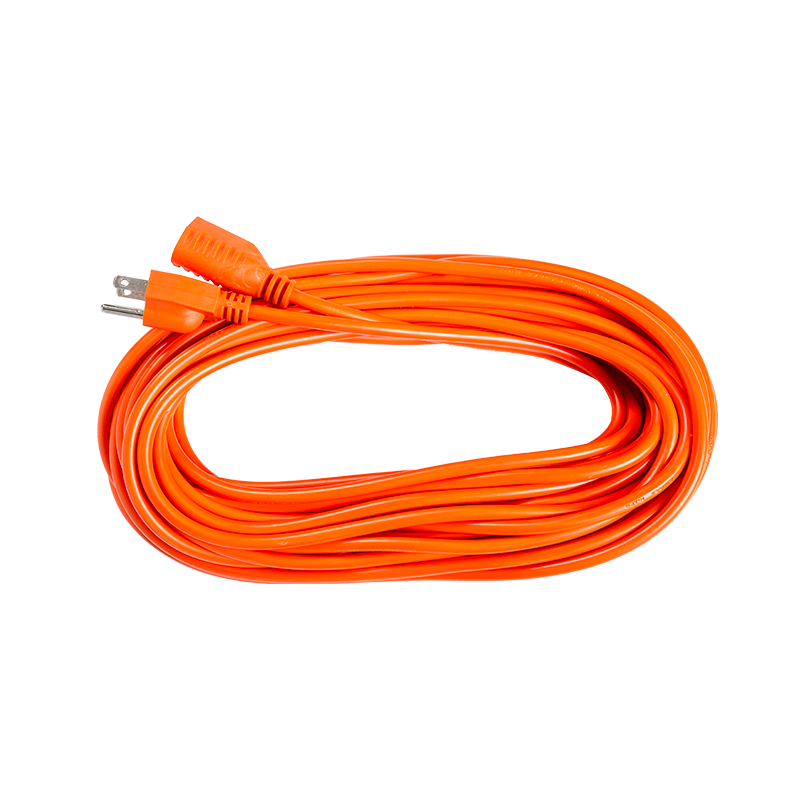When using indoor extension cords in high temperature or humid environments, special protective designs are indeed required to ensure safe use. Here are some common protective designs and features:
1. High temperature resistant materials
High temperature tolerance: Some extension cords use special high temperature resistant materials (such as silicone, heat-resistant PVC, rubber, etc.) to make the outer insulation layer. These materials can withstand higher temperatures, usually between 50°C and 80°C, and some can even reach above 90°C. These extension cords are suitable for use in kitchens or other high temperature environments.
Cable specifications: Extension cords used in high temperature environments usually have higher cable grades (such as thicker outer skins, stronger insulation layers) to cope with heat accumulation and high temperature challenges.
2. Waterproof and moisture-proof design
Waterproof shell: Some indoor extension cords are waterproof, especially when used in humid environments (such as bathrooms, basements, kitchens, etc.). The outer insulation layer may use waterproof materials (such as silicone, PVC waterproof coating) to prevent moisture from entering the cable and prevent short circuits and electric shock risks.
Moisture-proof treatment: Some extension cords are specially treated for high humidity environments, and the outer skin has stronger moisture-proof properties to prevent moisture and water vapor from damaging the wires.
3. Anti-UV design
UV protection layer: If the extension cord needs to be used in an environment exposed to sunlight or UV rays (such as a room with windows or a terrace), some high-end extension cords are designed with UV-resistant outer materials. This design can prevent the outer skin from brittle, cracking, or reducing durability due to UV exposure.
4. Strengthened insulation and anti-pull design
Strong outer skin: To provide better protection in humid environments, the outer insulation layer of extension cords usually uses thicker and stronger materials. In addition, some extension cords also use anti-pull designs to make the cable less likely to be damaged in hot or humid environments.
5. Electrical protection function
Overload protection: In order to avoid fire or electrical failure caused by circuit overload, some high-end indoor extension cords have built-in overload protection devices (such as fuses, automatic power-off switches). This is particularly important in hot environments, because electrical equipment is prone to overheating when the load is too high, increasing the risk of fire.
Lightning protection: Some special-purpose extension cords (such as those used in open air or humid areas) may also be equipped with lightning protection to prevent sudden lightning strikes or power fluctuations.
6. Compliance with standards and certifications
IP rating certification: For waterproof and moisture-proof requirements, you can choose an extension cord with IP (Ingress Protection) rating certification. The higher the IP rating, the better it is waterproof and dustproof. For example, an IP44-certified extension cord can withstand water splashes and dust intrusion, which is very suitable for humid environments.
UL or CE certification: In hot or humid environments, certified extension cords (such as UL, CE, etc.) can ensure that they meet safety standards and are more reliable when used.
7. Special design for use
Outdoor/industrial extension cords: If you are using it in a very humid or high-temperature environment (such as a factory workshop, outdoor use, etc.), you can choose a specially designed industrial extension cord. This type of extension cord usually has higher temperature resistance, moisture resistance, and resistance to mechanical damage.
The protection design of the extension cord in high temperature or humid environment is very important. When choosing the right product, pay special attention to the cable material, outer skin thickness, waterproof and moisture-proof treatment, overload protection and other functions. In addition, you should avoid exposing the extension cord to extreme conditions when using it, and check its safety regularly to ensure that the extension cord is always in good working condition.



 English
English русский
русский















